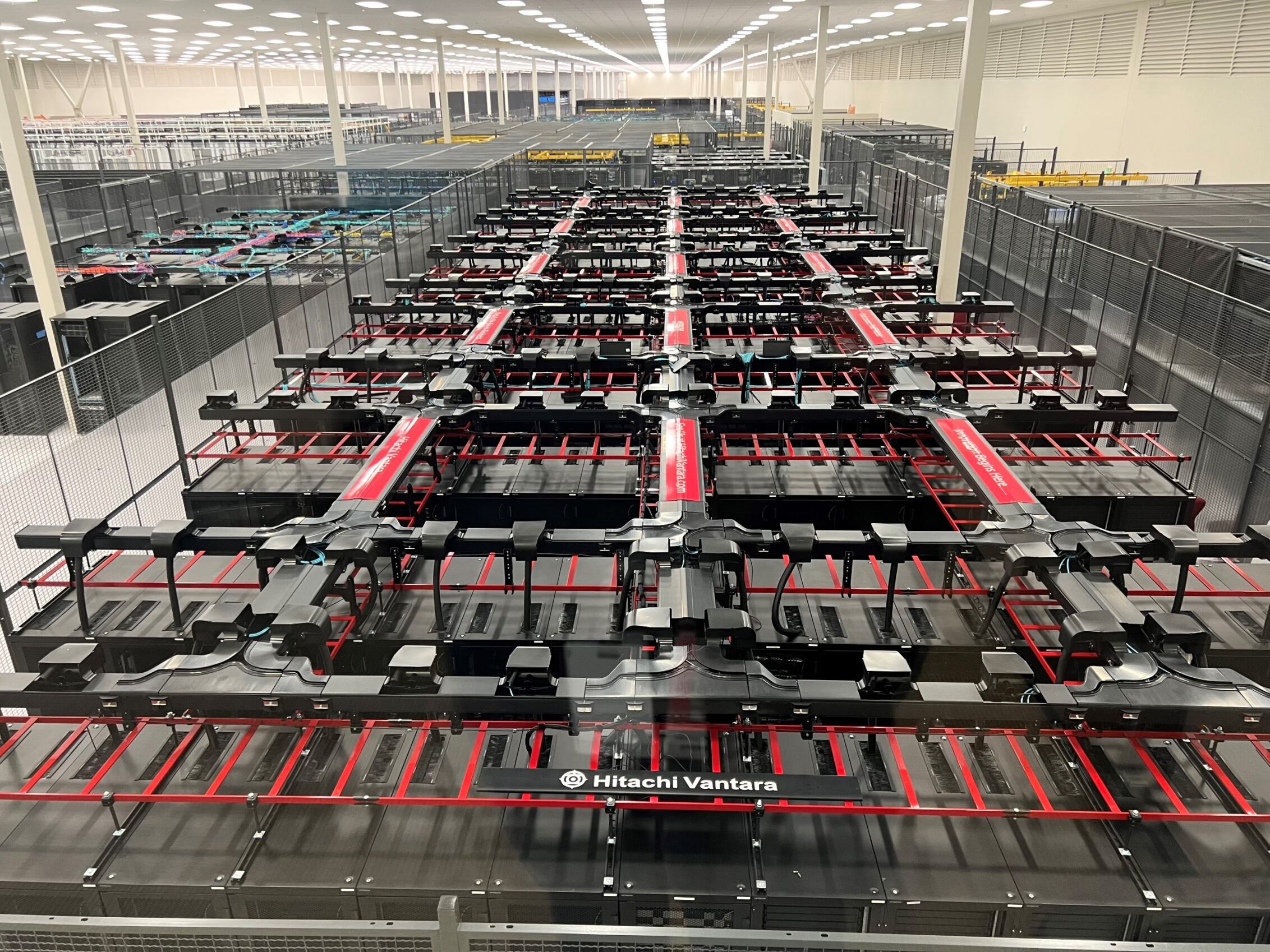Green and Lean: Unlocking Environmental Sustainability and Savings through Data Center Transformation


Joe Morris recently spoke with Hitachi Vantara Insights about his role overseeing a massive modernization project at the company’s Denver data center. Their far-ranging conversation reveals insights on how to upgrade legacy compute and storage equipment with powerful, eco-friendly alternatives that save millions of dollars for Hitachi Vantara – or potentially for any other company that follows his example.
Hitachi Vantara Insights: Let’s start with your motivation for undertaking this project. What were the key drivers and goals?
Morris: Energy consumption in data centers is a hot topic right now. We wanted to simplify our infrastructure and make sure that we were upholding modern standards for reliability and environmental sustainability. In that sense, we were responding to government requirements and corporate mandates. But I was also confronting some personal passions – like recognizing how climate change will ultimately affect my two teenage daughters, and being conscious of the role that today’s data centers play in carbon emissions.
Insights: What were the technical drivers for this modernization project? Were you confronting obsolescence issues?
Morris: Yes. The bulk of our equipment was aging, which caused some headaches from a support standpoint, like difficulty finding replacement parts.
Insights: Tell us about the Denver data center. What types of information systems does it support?
Morris: This data center primarily hosts our internal applications, the largest of which is our Oracle ERP system. To keep these critical systems running optimally, we replaced our storage and computing resources with more efficient alternatives.

Insights: What systems, exactly? And what was the scale of the initiative?
Morris: On the storage side, we significantly reduced our hardware footprint, from about 30 racks of legacy storage systems down to two racks of Hitachi Vantara Virtual Storage Platform (VSP) 5600 systems. We also downsized our server infrastructure from 145 legacy blade servers to 86 Hitachi DS 120/220 servers.
Insights: What did that mean in terms of your environmental sustainability objectives?
Morris: Moving operations to the VSP 5600 storage system will yield a much more efficient operation, with the potential to reduce CO2 emissions by up to 96%, reduce power reduction by up to 89%, and reduce data center space by as much as 93%. Similarly, adopting DS 120/220 servers can yield a 40% power reduction, 40% space and footprint reduction, and 22% savings in virtualization licenses.
Insights: Did you consider using public cloud infrastructure? For example, since Oracle is your ERP vendor, did you think about hosting your ERP systems on Oracle Cloud Infrastructure?
Morris: We moved some information systems to public clouds, but for critical items like our ERP apps we like to have complete control over the data flow. Hitachi Vantara provides a 100% data availability guarantee for its systems. That means ensuring reliable compute power as well as zero downtime, which you can’t guarantee with a public cloud. So we felt it necessary to keep our ERP system on premises.
Insights: You accomplished a lot in a short time. Walk us through the primary steps of the migration.
Morris: We have a great team, led by Madhu Shalini Subramaniyan, our global lead for core infrastructure services. Under her direction, we assessed our current footprint for power utilization. These metrics helped us determine where we could consolidate and where we needed to maintain distinct systems, while keeping everything secure. We also examined our cage layout to optimize the arrangement of cabinets, racks and servers. Those physical changes, coupled with the gains from more efficient servers and storage devices, allowed us to reduce the total footprint from 180 to 74 cabinets.
Insights: How does that translate into overall power consumption?
Morris: We’re conserving lots of power. We dropped our power commitment with our co-location provider from 593 to 300 kilowatts – although we are utilizing slightly less power than our commitment. The result equates to approximately 40% savings in operating expenses per year.
Insights: It sounds like you are fulfilling both your personal and your corporate environmental goals!
Morris: Environmentally, the project was a big win on a couple of levels. In addition to reducing our carbon footprint in this data center significantly, we were able to repurpose some of the old equipment – not just the electronic components, but also things like cabinets and spare parts. And we properly disposed of about 50,000 lbs. of e-waste by taking obsolete gear out of commission. On a corporate level, Hitachi is committed to sustainability and we, at Hitachi Vantara, are committed to making each generation of our storage systems more economically friendly by reducing energy consumption and incorporating recycled plastics.
Insights: How did this project impact your workforce – all the people who rely on those corporate applications?
Morris: Even with all the data migration and consolidation that was required, we were able to complete the project with no down time.

Insights: Tell us more about your choice to use Hitachi Vantara hardware and software. Obviously, that makes sense from a brand perspective. But, objectively speaking, was that the best choice?
Morris: No question. From a technical perspective, our high-end storage arrays deliver a compression ratio of four to one. We also increased our security posture with data-at-rest encryption, which is an absolute requirement for customers in financial services and other heavily regulated industries. We are able to adhere to these customer requirements while being more efficient with our data storage. For example, we can take advantage of some of the industry’s best data deduplication features, which saves space by eliminating redundant copies of data which enables us to have a much smaller hardware footprint, and yet are able to take on more workloads within our data set.
Insights: Did this project extend beyond hardware modernization?
Morris: Definitely. We didn’t just replace old computers and storage equipment. Madhu’s team took a close look at how we could refresh and simplify the entire network. For example, our analysis showed that maintaining our existing firewall capacity would have cost close to one million dollars in upgrade fees. By simplifying and consolidating our firewalls, we brought that down to around $250,000.
Insights: Did you do all this in-house or did you hire outside consultants to supplement your team?
Morris: I am proud to say that our internal team went all the way from concept to execution with very little oversight. Being able to do everything internally not only minimized costs, it was an education for the team. Having a modernized data center vastly increases our troubleshooting capabilities.
Insights: Looking back on the project from today’s vantage point, how would you sum up the major accomplishments? Do you have any other stats or metrics you can share?
Morris: We raised our data center infrastructure efficiency from 63% to 77%. When you consider our power utilization, infrastructure needs, and support requirements, our overall cost savings are about 40%. And it doesn’t stop there. It is a continuous improvement cycle. As we at Hitachi move closer to our goal of being carbon neutral across our operating sites by 2030, we are carrying the torch forward for the future.
Insights: Any closing thoughts or words of wisdom for peers and colleagues in other organizations facing similar data center modernization initiatives?
Morris: Don’t accept the status quo. The only way you can invoke change is to challenge the way things have been done in the past. Get outside your comfort zone.
# # #
Joe Morris is CIO at Hitachi Vantara. Based in Englewood, Colorado, he joined the company in 2018 and has held various roles in the Global IT organization. Earlier in his career, Morris worked at IBM and Newmont Corporation. He graduated from the University of Denver with a BSBA in Real Estate and Finance.
Learn more about getting started with sustainable data infrastructure.